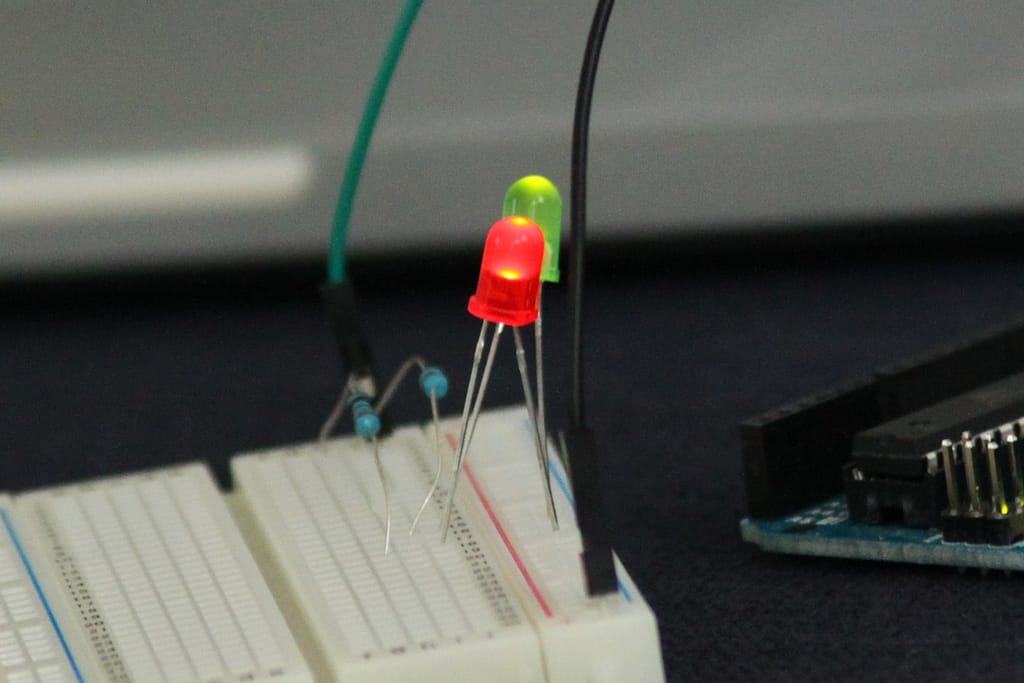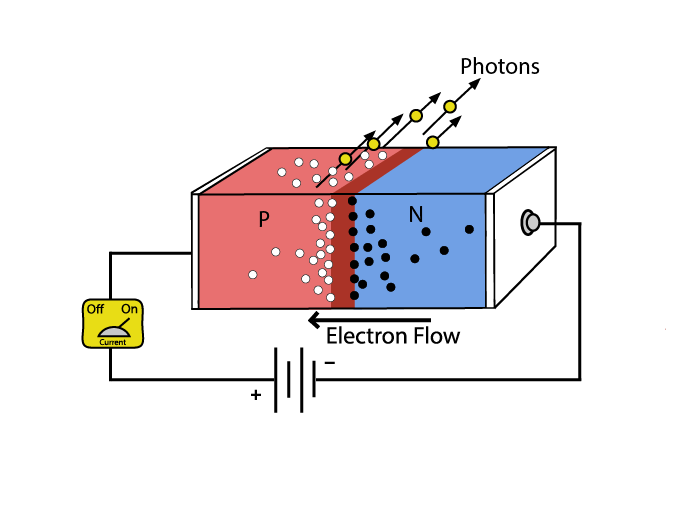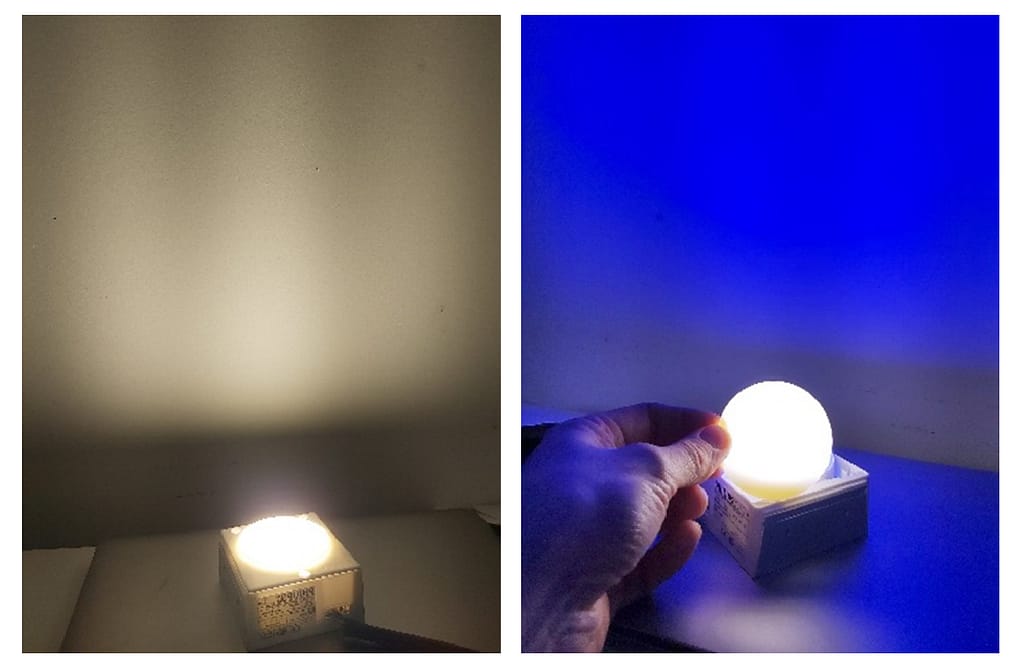Blog
How does an LED work?
When you mention “LED” to people, the first thing that they may think of could be something that looks like this:

A red, or perhaps green, cap, with two legs to connect power to. They were used for indicators in electronic equipment initially. As the costs reduced, they started to be used in other applications, such as 7-segment displays in bedside clocks.:

Fast forward to today, and LEDs have evolved considerably, to the point that most general purpose luminaires supplied now have LED’s as their light source, and they look something like this:


To understand how the light is generated, we need to zoom in a little closer, to the LED itself, which sits underneath the yellow top.
An LED is a small piece of material, sometimes silicon or even sapphire, doped (mixed) with impurities such as indium or gallium, to produce a positively charged half, and a negatively charged half.

When an electric current is passed across the LED, electrons cross the junction between the halves. At this moment energy is released in two forms. Some as heat, and the remainder as a photon of light. The energy of the photon (its wavelength, or the colour of the light) is dependent on what materials were mixed. Different materials and different mixtures give different colours of light.
Currently, the most efficient way of producing white light is to have the LED create a very blue light, and then pass that through a phosphor (the yellow coating on the top of LEDs) to spread the energy out through all visible wavelengths of light. Because of this, there are some features of LED’s to be aware of, and we will cover these in later articles, such as binning, colour rendering and efficiency.

In this image we can see that the direct light from the module lights the wall up blue, but the light passing through the disc is white – that’s the phosphor doing its work.
It’s possible to create LEDs that give off very specific spectra, or colour, and these can be used in a variety of areas. In retail a more golden light might be used in a bakery to make the bread look more appealing, whereas a butchers might employ a light with more of a red element to make the meat look more appetising, for example. In a jewellers a cooler white colour might be used to highlight the sparkle in the diamonds.
Horticulture is another area where specific colours are being explored as these can allow fruits, salads and plants to grow either quicker, or larger, or with enhanced flavour, depending on the colour of light that they grow under.
We hope you have found this helpful. For any questions or comments, feel free to Contact Us



